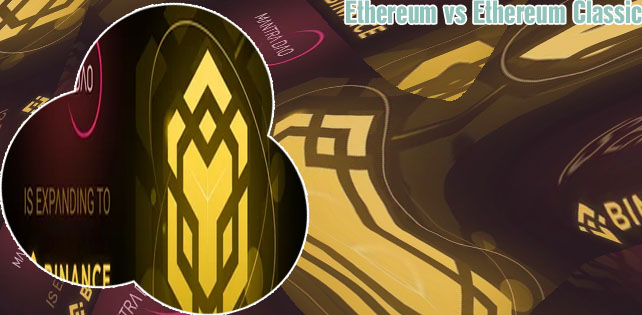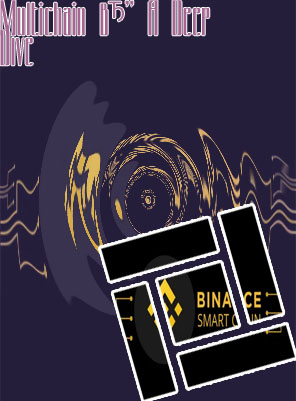Multichain ethereum binance smart chain avalanche

When exploring the world of multichain platforms such as Ethereum, Binance Smart Chain, and Avalanche, it is essential to have a comprehensive understanding of how these networks operate and interact with each other. To help shed light on this complex topic, we have compiled a list of four articles that offer valuable insights and solutions for navigating the intricacies of multichain ecosystems.
A Beginner's Guide to Multichain Interoperability: Connecting Ethereum, Binance Smart Chain, and Avalanche

Multichain interoperability has become an essential topic in the realm of blockchain technology, especially with the increasing popularity of multiple blockchain networks such as Ethereum, Binance Smart Chain, and Avalanche. The seamless connection between these different chains is crucial for enhancing scalability, efficiency, and overall user experience within the decentralized finance (DeFi) space.
One valuable resource for beginners looking to explore multichain interoperability is the guide that provides a comprehensive overview of how Ethereum, Binance Smart Chain, and Avalanche can be interconnected. The guide delves into the technical aspects of cross-chain communication, highlighting the importance of bridges, wrapped assets, and smart contracts in facilitating interoperability.
Furthermore, the guide offers practical insights into the various use cases of multichain interoperability, such as decentralized exchanges (DEXs), yield farming, and cross-chain asset transfers. By understanding the fundamentals of connecting different blockchain networks, beginners can gain a deeper appreciation for the potential applications of interoperability in enhancing DeFi protocols.
Overall, this guide serves as a valuable entry point for individuals interested in exploring the intricacies of multichain interoperability and its implications for the future of blockchain technology. It emphasizes the importance of seamless connectivity between Ethereum, Binance Smart Chain, and Avalanche in unlocking a new wave of decentralized
Understanding the Role of Cross-Chain Bridges in Multichain Networks
In the fast-paced world of blockchain technology, the concept of cross-chain bridges has gained significant attention due to its crucial role in enabling interoperability between different blockchain networks. These bridges essentially serve as connectors, allowing seamless communication and asset transfer between distinct chains, thereby enhancing the overall efficiency and functionality of multichain networks.
One key aspect of cross-chain bridges is their ability to facilitate the transfer of assets across different blockchains, ensuring liquidity and accessibility for users across various networks. This interoperability is essential for enabling decentralized applications (dApps) to operate effectively across multiple chains, providing users with a seamless and integrated experience.
Furthermore, cross-chain bridges play a vital role in enhancing security and decentralization within multichain networks by enabling the secure transfer of assets without the need for intermediary parties. This direct peer-to-peer transfer mechanism ensures that users retain full control over their assets, reducing the risk of potential threats and vulnerabilities.
Overall, understanding the role of cross-chain bridges in multichain networks is essential for unlocking the full potential of blockchain technology and fostering greater innovation within the industry. By bridging the gap between different chains, these connectors pave the way for enhanced scalability, interoperability, and security, ultimately driving the evolution of decentralized ecosystems worldwide.
The Future of DeFi: Leveraging Multichain Solutions for Enhanced Efficiency and Scalability
Decentralized Finance (DeFi) has revolutionized the way we think about traditional finance by providing decentralized, permissionless, and trustless financial services through blockchain technology. As the DeFi ecosystem continues to grow, the need for enhanced efficiency and scalability has become increasingly apparent. This is where multichain solutions come into play, offering a promising path towards addressing the current limitations of DeFi platforms.
Multichain solutions allow for interoperability between different blockchain networks, enabling seamless communication and transfer of assets across various chains. This not only enhances efficiency by reducing transaction costs and settlement times but also enhances scalability by distributing the network load across multiple chains.
One of the key benefits of leveraging multichain solutions in DeFi is the ability to access a wider range of assets and liquidity pools. By connecting multiple blockchains, users can tap into a more diverse ecosystem of tokens and financial instruments, unlocking new opportunities for trading, lending, and borrowing.
Additionally, multichain solutions help to mitigate network congestion and high gas fees that are often associated with popular DeFi platforms. By spreading transactions across different chains, users can enjoy faster and more cost-effective transactions, making DeFi more accessible to a wider audience.
Navigating the Multichain Landscape: Tips for Developers and Investors
The multichain landscape has become a complex and rapidly evolving ecosystem, presenting both challenges and opportunities for developers and investors. In this informative guide, readers are introduced to key tips on how to navigate this dynamic environment successfully.
One of the main takeaways from this guide is the importance of understanding the different multichain platforms available and their unique features. By gaining a comprehensive knowledge of the various multichain solutions, developers and investors can make informed decisions on which platform best suits their needs and goals. Additionally, the guide emphasizes the significance of staying updated on the latest trends and developments in the multichain space to capitalize on emerging opportunities.
Furthermore, the guide highlights the critical role of security and due diligence in multichain investments. With the proliferation of scams and vulnerabilities in the blockchain industry, it is essential for investors to conduct thorough research and vetting processes before committing their funds to any multichain project.
Overall, this guide serves as a valuable resource for those looking to gain insights into the multichain landscape and make informed decisions in their development and investment endeavors.
Recommendations:
- Consider exploring interoperability features of multichain platforms to leverage cross-chain functionalities.
- Dive deeper into the governance models of multichain networks to understand how decisions are made and
Menu
- Crypto exchange
- Dogebtc
- Etherium vs etherium classic
- Cryptocurrency bitcoin price
- How to transfer money from cryptocom to bank account
- Where to buy crypto
- Most viewed crypto
- What the hell is bitcoin
- What is a bitcoin halving
- How to add bank account to cryptocom
- How to withdraw money from cryptocom
- How do you buy cryptocurrency
- Weth crypto
- Highest bitcoin price ever
- Apps cryptocurrency
- Bitcoin cryptocurrency
- Crypto com nft
- Should i buy bitcoin before halving
- Create cryptocurrency
- Bit coin diamond
- When to buy bitcoin
- Best crypto news websites
- Who has the most btc
- Dogecoin to a dollar
- Cryptocurrency exchanges
- Can i buy dogecoin on cash app
- Free crypto coinbase
- Cryptocom xrp
- Litecoin price today
- How does bit coin work
- Where to buy ethereum
- Buy crypto with credit card
- Where to buy shiba inu crypto
- What is usdm on cryptocom
- Where to buy catgirl crypto
- Crypto com not letting me buy
- Baby dogecoin price chart
- Safemoon crypto com
- When will all btc be mined
- Which crypto to buy right now
- Today's bitcoin cash price
- The crypto
- Top cryptos
- How much bitcoin should i buy to start
- Cryptocoin com coin
- Cryptocurrency prices
- Bonfire crypto price
- How much is pi crypto worth
- Coindesk bitcoin price
- What is btc wallet
- Buy bitcoin cash
- What app can i buy dogecoin
- Buy dogecoin stock coinbase
- How to buy dogecoin on iphone
- Crypto com not working
- Cryptocurrency to buy
- Ethusd price
- To invest all profits in crypto
- Mana crypto price
- Cryptocom card
- Ethereum crypto
- Ethereum bitcoin wallets
- Bit price
- Crypto wallet app


